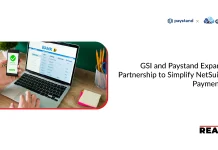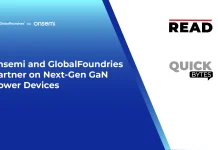Digital transformation is assisting the transition of the food industry, leveraging emerging technologies to enhance efficiency, improve food safety, and optimize supply chains. This transformation is not just about adopting new technologies. It also involves rethinking how food companies operate, engage with customers, and manage their resources.
Understanding Digital Transformation in the Food Industry
Digital transformation in the food industry encompasses a range of technologies that streamline operations and enhance product quality. Companies are increasingly adopting cloud-based software solutions, real-time data analytics, and digital tools to improve their production processing capabilities. This shift is vital for meeting the evolving demands of consumers who expect higher quality, safety, and sustainability in their food products.
How is Technology Transforming the Food Industry?

Digital technologies are revolutionizing the food industry, impacting every stage from production and processing to distribution and consumption. This transformation is driven by the need for increased efficiency, enhanced safety, and improved consumer engagement.
Artificial Intelligence (AI):
AI is utilized to analyze vast amounts of data collected from various sources along the supply chain. This technology helps in predicting demand, optimizing inventory levels, and enhancing customer experiences by providing personalized recommendations. By leveraging AI-driven insights, food companies can enhance their operational performance and foster stronger relationships with consumers through tailored offerings that meet their preferences. Additionally, AI can identify trends & patterns that aid in strategic decision-making, enabling companies to respond proactively to changes in the food industry.
Internet of Things (IoT):
IoT devices are revolutionizing supply chain management by enabling real-time monitoring of products from production to delivery. Smart sensors track temperature, humidity, and other critical factors to ensure food safety & quality throughout the supply chain. These sensors help maintain optimal conditions, thereby reducing spoilage and waste. The data collected from IoT devices can be analyzed to identify inefficiencies and areas for improvement, allowing companies to make informed decisions that enhance operational performance. As part of the digital transformation in the food industry, IoT technology boosts efficiency and strengthens transparency & traceability, fostering greater consumer trust in food products.
Blockchain Technology:
This technology offers unparalleled transparency in the food supply chain. By recording every transaction on a secure ledger, blockchain enhances traceability, allowing consumers to verify the origins of their food products and ensuring compliance with safety standards. This also helps build trust between producers and consumers. For instance, Walmart partnered with IBM to implement blockchain technology and trace the origin of several products sold in its stores. The food traceability system of the company enabled it to trace two products: Mangoes sold in Walmart’s US-based stores and pork sold in its China-based stores. Walmart can now trace the origin of more than 25 products it sells.
Automation:
Robotics and automated systems are increasingly used in production lines to improve efficiency and reduce human error. Automated processes speed up production and minimize waste by ensuring precise measurements and consistent quality. They also enable companies to quickly adapt to changing consumer demands and introduce new products. Integrating robotics into operations allows food manufacturers to enhance safety by taking over hazardous tasks that may pose risks to human workers. Thus, the adoption of robotics & automation in the food industry boosts productivity and contributes to high standards of food safety and quality assurance.
Also Read: AI in Restaurants: 9 MindBlowing Ways AI is Transforming the Food Industry
Advantages of Embracing Digital Transformation in the Food Industry

The food industry is undergoing a significant shift as more companies embrace digital transformation. This evolution is driven by the need to enhance operational efficiency, meet consumer expectations, and navigate complex regulatory landscapes. The advantages of adopting digital technologies in the food industry are manifold, impacting everything from production to customer engagement.
Enhanced Safety & Hygiene:
Digital transformation plays a critical role in improving food safety and hygiene standards. By implementing automated systems for tracking product expiration dates and monitoring storage conditions, companies can ensure that their products are safe for consumption. Technologies such as IoT sensors allow for real-time monitoring of temperature and humidity levels, minimizing the risk of contamination. Additionally, automated compliance checks maintain adherence to safety regulations, facilitating quicker recalls if necessary, thereby protecting public health and maintaining consumer trust.
Increased Operational Efficiency:
Automation of repetitive tasks allows employees to focus on high-value activities, significantly optimizing operations. Manufacturing Execution Systems (MES) provide real-time monitoring of production processes, improving resource allocation and reducing waste. Digital transformation in the food industry also enhances visibility and control over supply chains. By using advanced data analytics, businesses can find inefficiencies and apply strategies for improvement, which helps boost productivity and improve operations.
Cost Savings:
Implementing digital technologies leads to significant cost savings by optimizing resource use and reducing waste through data-driven decision-making. Automation also lowers labor costs associated with manual processes. Additionally, predictive analytics can help businesses anticipate demand fluctuations, allowing for more efficient inventory management and minimizing excess stock. Companies can allocate resources effectively by streamlining operations and enhancing efficiency, ultimately improving their bottom line.
Challenges in Digital Transformation
The food industry is undergoing significant transformation, due to the integration of digital technologies. These advancements present opportunities for enhanced efficiency, quality, and customer engagement. However, they also introduce a range of challenges that organizations must navigate.
Technological Challenges:
Many food manufacturers rely on outdated systems that are not compatible with modern digital solutions. Transitioning to advanced technologies requires substantial investment and may incur high upfront costs. Additionally, the integration phase can disrupt ongoing operations. As digital tools become more prevalent, there is a growing need for a workforce skilled in technology management and data analytics. The transition from manual processes to automated systems necessitates training and development programs. Employees may resist adopting new systems or processes, due to fear of job loss or unfamiliarity with technology. As companies digitize their operations, they also become vulnerable to cyber threats that could compromise sensitive data.
Operational Challenges:
The supply chain of the food industry is inherently complex, involving multiple stakeholders from producers to retailers. Digital transformation requires seamless coordination across these entities, which can be challenging due to varying levels of technological adoption and operational practices. The perishable nature of products in the food industry makes inventory management essential. Companies face difficulties in balancing stock levels to meet demand while minimizing waste from spoilage. Advanced technologies like AI can help optimize inventory; however, they require accurate data inputs and system integration.
Regulatory Challenges:
The food industry is subject to stringent regulations regarding safety and quality. Digital transformation initiatives often require substantial resources to ensure compliance with these evolving standards. Companies must invest in technologies that can automate compliance checks, track product expiration dates, and facilitate rapid recalls when necessary. Non-compliance risks include penalties, product recalls, and reputational damage. Furthermore, as regulations continue to evolve in response to emerging food safety concerns, businesses must remain agile and adaptable in their compliance strategies.
In Conclusion
The digital transformation in the food industry represents a pivotal shift that enhances operational efficiency, improves food safety, and meets evolving consumer demands. By leveraging technologies such as AI, IoT, and blockchain, food companies can streamline their operations, optimize supply chains, and foster trust among consumers. Digitalization of the food industry presents several challenges; however, the benefits far outweigh these obstacles. As the industry continues to embrace digital technologies, it will not only improve productivity & reduce waste but also create a sustainable food system that aligns with modern consumer expectations.




